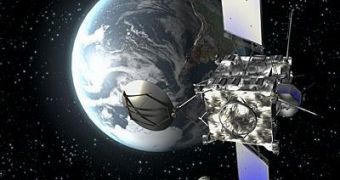The incident in which the spacecraft Rosetta was mistaken last week-end with a Near Earth Object, that had an incoming trajectory which missed the Earth, determined the astronomers to defend the system that failed to make the difference between a rock and an artificial spacecraft. The fact that the Distant Artificial Satellites Observations, could not even identify one of the tracked objects in the sky, raises serious questions about the capability of the NEO program to detect objects that could have trajectories that might intersect the Earth's orbit.
The British's Royal Astronomy Society, was ready to release a statement regarding the rock that would pass near the Earth, when a Russian astronomer named Denis Denisenko, found that the NEO had a trajectory similar to that of the Rosetta spacecraft, which was on a scheduled mission to swing by Earth, to gather speed and apply trajectory corrections.
The comet chaser which will pass by Earth on the 13th of December, at a distance of 5300 kilometers from the planet's surface is due to meet with the comet 67P/Churyumov-Gerasimenko in the year 2014. On this second approach, the spacecraft will also have the chance to look at the Earth's upper atmosphere to observe shooting stars, and the magnetosphere takes pictures of urban regions on the surface, and measure light reflected from the Moon, to test and calibrate certain instruments.
Multiple observatories around the world have spotted the spacecraft on Thursday, and mistaken it with a near Earth object, which prompted the Minor Planet Center to issue a potential near-miss warning. MPC has designated the object 2008 VN84.
The designation was quickly withdrawn, when the Russian astronomer announced that the object was actually the Rosetta, but the information triggered a lot of concerns regarding the capability of detecting NEOs, while we can not even track the positions of well known satellites. The scientific community defended the system which administrates the information on distant artificial objects, due to the lack of centralized databases checking incoming objects against known space probes being extremely difficult.
This is mainly because the Minor Planet Center is updated from five different locations, and most of the time, the information regarding the locations of certain objects cannot be accessed in real time, so it cannot determine whether the incoming object poses security threats or not.

 14 DAY TRIAL //
14 DAY TRIAL //